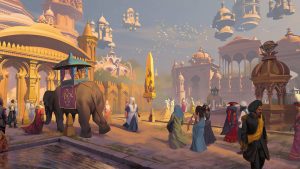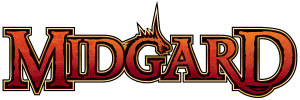 Writing, Game Design, and the Oral Tradition
Writing, Game Design, and the Oral Tradition
I’ve been thinking a lot about exactly how we tell our stories. Mostly, this is at my youngest daughter’s request or instigation, though (given that she is 5 years old) she probably did not intend to induce such writerly pondering. She just wanted me to change the way I tell stories. I’ve gotten pretty good at some parts of that, so maybe “just change it” is a bigger deal than I expected.
Change is Afoot at Story Time
Let me back up a bit. Most days, there are two or three occasions for stories in my daughter’s life. One is traditional “read me a book” time, which I’m all about but which doesn’t offer any surprises. A second time is when I’m taking the Wee Sprout to her preschool, and her mother is driving. She’ll say, “Tell me a story.” And if things are going as usual, I take those 15 or 20 minutes and do just that with stories about girls who live in the woods and have various hideous difficulties with bears, fairies, nasty siblings, evil witches, and shapeshifters—and maybe robots. The content varies, but it is always freeform, and lately, she’s been contributing a bit more to it. I’ll ask her a question, like “Did the little girl get out of the cave that day?” and almost invariably she’ll give me the most narratively compelling response: “No, she was lost!” for that example, or maybe “No, she met a bear!”
Well, I think the connection to RPGs is pretty clear, but to expound on it just a little, I used to be doing storytelling in the pure oral tradition, spinning yarns to please my audience. My daughter just listened to me. Lately, my young audience has decided she wants more control over the story and is offering suggestions and responding to prompts. We’re doing tiny bits of shared worldbuilding and tiny snippets of scenes and stories. I miss the autonomy of being able to wrap up an arc the way I want to, but I am over the moon that she’s finding her own voice and participating and speaking up about the struggles of various young storytime animals, children, and robots. If this were a tabletop RPG instead of a storytelling game, I’d say she is showing some player agency. It’s a blast but unpredictable.
Second Story Time: Vast Stuffie Narratives
Happy as I am at that development, I’ve been less pleased about the other change. That’s evening storytime, which used to be either reading aloud (still popular!) or telling a story improv-style. That second style has become “Show me a Story” time, which just means “Let’s take these stuffed animals or toys and act out a story together.”
And I sort of loathe this format, even as I’m fascinated by the difference. Part of this is surely related to my longstanding aversion to putting the focus on minis and props and battlemats if a game doesn’t need them. As an adult exposed to decades of RPGs and movies and such, I’ve come to prefer small groups of characters with clear goals and character arcs. My daughter thinks that is pure foolishness, and her aesthetic shows a fondness for a vast cast of characters—all the toys! Enormous families with complex genealogies! Everyone has a speaking part, and there’s no plot to speak of!
 The thing is, she’s not wrong. Her love of complex and big-tent storytelling is something I find charming to watch (“Which bunny is that one?” She always knows!) And I can play along with it and maybe nudge it in a few directions that might suit my own tastes, but that’s not what this is. She knows she likes the big families and their complicated feuds with the neighbors on a particular night, and I’m just grateful that a few decades of RPGs have made me wise enough to say, “I think that aesthetic is exactly what this audience likes. Let’s do the thing that works at this table because this story isn’t really about me at all.” And then I think about whether I could run an RPG where every player has 6 characters, and the drama is entirely internal, and I realize it would be fun for a week or two, but it’s probably not for me. That’s okay. I’ll have another chance to spin a yarn my own way in the morning on the drive to preschool, and that tradition works too.
The thing is, she’s not wrong. Her love of complex and big-tent storytelling is something I find charming to watch (“Which bunny is that one?” She always knows!) And I can play along with it and maybe nudge it in a few directions that might suit my own tastes, but that’s not what this is. She knows she likes the big families and their complicated feuds with the neighbors on a particular night, and I’m just grateful that a few decades of RPGs have made me wise enough to say, “I think that aesthetic is exactly what this audience likes. Let’s do the thing that works at this table because this story isn’t really about me at all.” And then I think about whether I could run an RPG where every player has 6 characters, and the drama is entirely internal, and I realize it would be fun for a week or two, but it’s probably not for me. That’s okay. I’ll have another chance to spin a yarn my own way in the morning on the drive to preschool, and that tradition works too.
What I’m saying is, some stories are really for someone else. That used to bother me (“Why isn’t Twilight any good?”). In my own slow way, I’ve finally caught up to “That story is told in a way someone else really loves. Cool, I wonder how that style works?”
What sorts of storytelling do you most enjoy: spinning a yarn that players discover, collaborating on a story with particular questions to your players, or complex freeform play that relies on players pushing or resolving entirely original plot points without GM input? And which elements do you see most often in the players and GMs in your regular group? I’m curious to hear your own “RPG-adjacent” stories in the comments.

Ha, I fondly remember the times I used to tell my daughter the old fairy tales by Grimm (my mother used to read those to us for long years so I know a lot of them by heart) and suddenly she would take over and make this into theatre play with her as the director (for example she being Snow White and me being the prince; I actually had to leave the room just to return as her White Knight in shining armor coming to rescue the damsel in mistress. Or when my first experiment to actually roleplay with the kids suddenly turned into CSI Dungeon: Where is Snow White, just because there was a room with seven little beds whose inhabitants just happened to be dwarves.
And me being the GM doesnt stop my kids to take this role over and clearly tell me how I should run the game. Which is as it should be because I love when players don’t let me guess what they want to see within the game.
Generally, I wouldn’t call my games freeform, because I tend to have a particular plot in mind when starting to run them (be it an “official” campaign arc or a story invented by me). What I do though is to try and encourage my player to build characters with backgrounds and motivations, so in the end, the plot as envisioned by me get’s changed and twisted as soon as the PCs get involved, and they are totally free to make the story their own. This way, the game is still as story-driven as I like it to be without turning the players into passive readers and listeners.
Glad to hear it is a universal experience! I’m happy with how it is going, and encouraging participation is definitely a goal.
Wolfgang,
Similar experience with my 5 year old twins (boy/girl). I wanted you to know that this article inspired me to do even more of it with them.
They often drive the story to Lego Land and, as you might expect given their age, also to Poop and Pee Land. But we have a nice ongoing continuous story going on at night time as a shared story telling experience. All theater of the mind.
It’s clear that at least my daughter has the DM/GM gene of her father. I look forward to her first campaign.
I doesn’t end with them when they are little!
My son is in his early 20’s and is an excellent player! He and I have played in a weekly game since he was in his early teens or so :)
“Lately, my young audience has decided she wants more control over the story and is offering suggestions and responding to prompts.”
It’s very possible audience response always was part of the oral tradition of storytelling. it’s not uncommon for the surviving epics of various European cultures to include what seem to modern readers to be dull lists, which quite a few scholars believe were opportunities for the audience to join in. Your daughter is asking for more agency than that, but I wouldn’t be surprised if one of the reasons why oral epics often have several surviving versions (besides bardic license) was to meet the differing demands of different audiences.
Excellent. :)